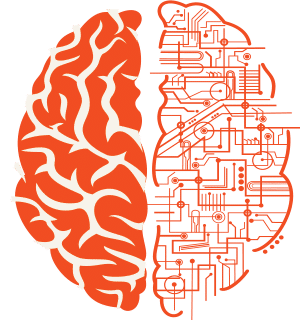Art Processing Sharing Blog


The Resynthesis IpOp effect is probably not used all that often. It always seemed like a specialty thing. It basically lets you define a sampling rectangle in the input to the effect, which is modeled, and then the texture is resynthesized. Its intent was to be a little bit visually funky, the textures it generates are very stylized.
But i recently discovered auto-randomized versions of it are truly awesome when used appropriately in gallery show runs as the main technique.
Here's a gallery show cycle output i just grabbed from a recent experiment in recursive texture resynthesis.
Each gallery show cycle, a sample rectangle is randomly generated for the Resynthesis effect, and the current canvas output is used for that sampling. The Resynthesis IpOp effect then uses the texture model it generated off of the rectangular sample of the existing canvas to generate a new re-synthesized texture field for the Resynthesis effect's output.
The other elements of the gallery show cycle run are introducing additional structure into the canvas. So what is being sampled each cycle for texture resynthesis is always a product of those additional treatments and what the resynthesized texture application from the previous gallery show cycle.
I also have the new Style Transformation start cycle option turned on, so a style transfer effect is happening prior to an auto selection masked application of the Resynthesis effect. My end cycle processing is the new Random Deep Gradient Lighting- Colorize end cycle option. All of the Colorize start and end cycle options are working with the new Compeller IpOp effect in some way.
The other thing i have going on is the particular data augmentation option i have turned on for the gallery show source. I'm using the new Src-Canvas Transition data augmentation option. So each gallery show source image used for gallery show processing is a transformation from the previous gallery show output to the randomly selected source image. So there is this push pull effect going on where the last gallery show output is first auto-transited to the Style, then overlaid with auto-masked Resynthesized texture from the last gallery show output, subjected to dispersive and optimization forces by the end cycle processing, and then pulled back to the new randomly selected spur image with the Src-Canvas Transition data augmentation.
Working with dispersive forces is crucial when using anything that amplifies noise. It acts over time in the repetitive processing cycles to damp down and eliminate the recursive noise amplification.
You can consider this an example of a more sophisticated art strategy dialed in using the new gallery show features in Studio Artist V5.5.5.
Hi, here is a new video, lots of MSG (background layer) and MSG generation path starts along with Time Particles in the paint synth, the "Piggy" figure I made in ZBrush and then animated in Blender, with embedded alpha channel, then took into Studio Artist and made into several different kinds of Movie Brushes. Several layers composited together in Blender. Music made with Bespoke Synth and my Shenai. If anyone has any questions about how it was done I'd be happy to explain more.…
I am not sure if this forum is active anymore... I thought it would be fun to post a very early piece of mine made with, probably, SA3 or 4. I have been a user since 2001.
"Chromosome Rain", 2010
Another experiment painting with Paint Synth vector based presets. Captured rather than output to file.
Either the night sky before the Day of the Triffids - or a closup of Star Treks The…
A capture of a PasEq playback (all I had left after a crash) I didn't save the over sized Paint Synth Presets that I was adjusting and testing... But I did save the PAsEq. This would be what…
Working with Source .png Images Turning the alpha channel on for transparent .png backgrounds When using .png source images with transparent backgrounds, you will need to set Canvas > Selection > Set to > Source Alpha and then Check Mask…
Basics of the Dual Paint Mode, Concepts and How to Create Your Own Dual Paint Presets For More Information on Dual Paint please see this DUAL PAINT POST For More Information DUAL PAINT POST
The post…
How to Erase the Canvas To erase the canvas choose the Eraser Icon at the top of the Interface or choose Canvas > Erase to See this Post for more detailed information on the canvas eraser options.
The post…
Everything You Need to Know about Studio Artist Presets and Preset Management
The post Preset Management Video appeared first on Studio Artist…
Resizing the Canvas Please see this tip on Resizing the Canvas And how to Resize the Canvas for High-Resolution Print
The post Resizing the Canvas appeared first on…